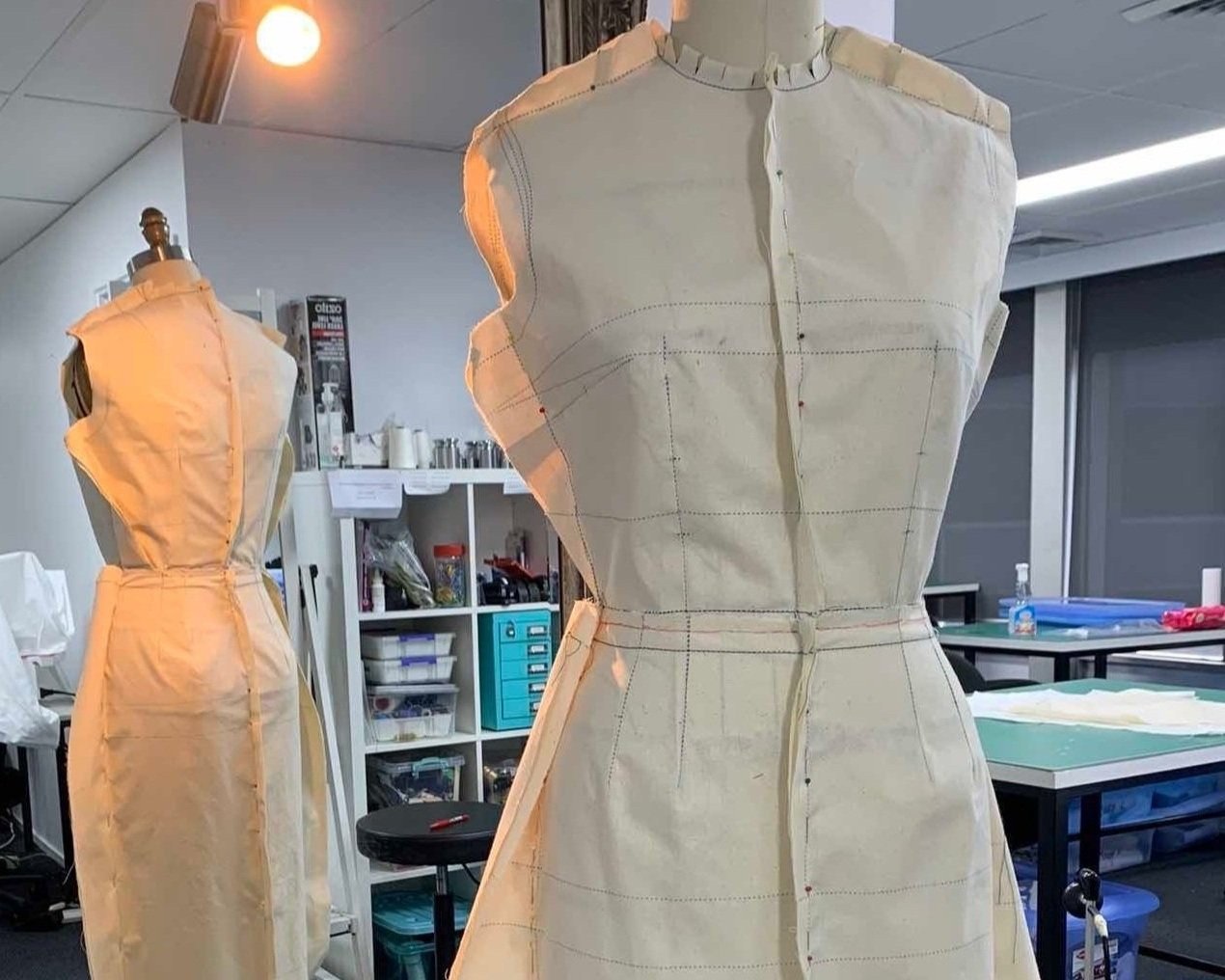VINTAGE INSPIRATION
Students this term have been treated to a step-by-step look at something truly special — a handmade wedding guest dress, crafted by our talented teacher, Meredith Paterson. The result? A stunning piece that blends skill, creativity and serious style.
That’s Meredith in blue in the middle with the groom’s sisters and cousins.
The dress was made with a royal blue 100% polyester satin-backed crepe from E&M Greenfields in Sydney, with the matte crepe side as the right side. It is totally bias cut, has a front and back V-neck, and princess lines coming to a point. It also has boning, an invisible zipper, and 7 godets (lots of hem!). Meredith drafted this pattern from her bodice block, and made four samples to get the fit just right.
Here’s Meredith with her partner Kenny (brother of the groom).
The pictures speak for themselves. Meredith’s dress is a perfect fit!
Meredith with Kenny’s sister, Athena.
If you’re tempted to enrol in a class and make something truly amazing for a special occasion, there are a couple of few different options on offer:



















































































